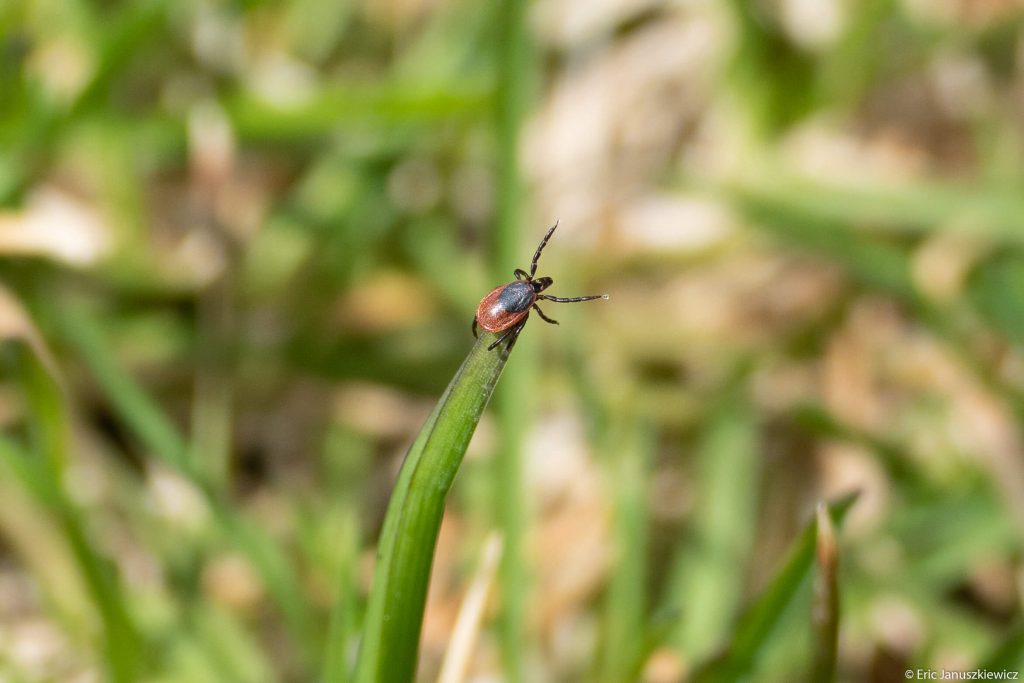When it comes to disease-carrying ticks, the best offense is a good defense. With vigilant observation and protective measures in place, you can greatly reduce tick encounters at your home, on your person and on your pets.

Tick Habitats
Tick habitats span a large part of the United States, especially the northeast. They are often found in tall grass, thick brush, forest edges, wood piles, stone walls, leaf litter and at the base of trees. They prefer shaded areas and high humidity. Ticks are also common in the same habitats as deer and mice, two of the most common tick-carriers.

Tick Size
Part of the reason ticks are so dangerous is because they are so difficult to spot. In fact, ticks in their second stage of development (the nymphal stage) can still be as small as a poppy seed yet are still capable of passing on infection.

You and Your Family
Unfortunately, there is no current vaccine available to protect against Lyme disease. A vaccine with 80% success rate existed in the 90’s, but was discontinued in 2002 in the wake of insufficient consumer demand. Lyme disease awareness has risen since then and effective and safe options are again in the stages of development.
In the interim, the best way to guard against ticks is to:
- Avoid known tick habitats;
- Treat clothes, shoes and outdoor gear with permethrin (use gloves and allow to dry completely before touching);
- Wear light colored clothes and tuck pants into socks;
- Treat skin and clothes with 20% DEET or essential oils;
- Perform tick checks within 2 hours of being outside (check armpits, hair and groin); and
- Put clothes in dryer on high immediately after being outdoors or in tick habitat.

Permethrin
Permethrin is a stable (synthetic) form of an insecticidal compound produced by the chrysanthemum flower. It has been used as a clothing treatment to prevent bites from ticks, flies, and mosquitoes since the 1970s. It provides a quick tick knock-down effect – both repels and kills. A University of Rhode Island study documented that people wearing permethrin-treated sneakers and socks were 73.6 times less likely to have a tick bite. Once fully dry, Permethrin is safe for humans, dogs and cats, but should be handled with caution when applying being careful to avoid direct skin contact.
Your Home
Several steps can aid in keeping ticks out of your yard:
- First, treat any bedding with permethrin (use gloves and let dry before touching);
- Create a mulch barrier around the yard with cedar chips (Atlantic Yellow Cedar is best);
- Keep your grass short and yard free of leaf-litter and wood;
- Increase sunlight and keep play areas 9 feet from woods’ edge; and
- spray your yard with tick killer during peak tick season (spring – fall).
You can also take steps to keep tick-carrying wildlife (deer, mice, chipmunk, shrew, groundhogs) out of your yard:
- Utilize repellents and fencing;
- Avoid feeding wildlife and remove their food sources; and
- Remove/clean favored nesting spots like sheds, woodpiles and stonewalls.
You can also leave cardboard tubes stuffed with permethrin-treated cotton balls around which will aid in killing ticks on small mammals like mice that use them as nests.

Pets
Just like you and your family, your pets will benefit from measures taken to keep your yard tick-free. You can also take the following steps:
- Take tick-safe walks with wide walking paths;
- Keep pets out of tall or dense grass;
- Treat your pets with anti-tick medication or use an anti-tick collar;
- Perform tick checks regularly after being outdoors (including in their ears and under armpits); and
- Treat pet bedding with permethrin (make sure to let dry before you or your pets touch it).
Additionally, you can speak with your veterinarian about the Lyme disease vaccine. Lyme vaccines can be administered safely to dogs 8 weeks and older. Certain manufacturers such as Vanguard, report 90% success rates in effectively protecting dogs against Lyme disease. No vaccines are currently available for cats. However, there are preventative treatments available and should be discussed with your veterinarian. Finally, if you find several ticks on your dogs, speak with your veterinarian about insecticidal baths.

Sources
https://www.ticklab.org/prevention
http://npic.orst.edu/factsheets/PermGen.html
United States Environmental Protection Agency. 2006. Permethrin Facts.
http://www.epa.gov/oppsrrd1/REDs/factsheets/permethrin_fs.htm
Toynton K, Luukinen B, Buhl K, Stone D. 2009. Permethrin General Fact Sheet; National Pesticide Information Center, Oregon State University Extension Services. http://npic.orst.edu/factsheets/PermGen.html
Miller NJ, Rainone EE, Dyer MC, Gonzalez ML, Mather TN. 2011. Tick bite protection with permethrin-treated summer-weight clothing. J. Med. Entomol. 48(2):327-333. http://www.tickencounter.org/pub/tick_repellent_clothing.pdf
